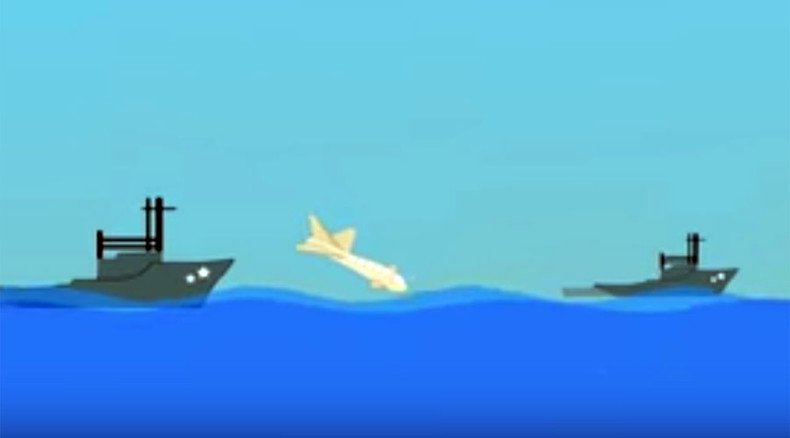Drone fever: Boeing patents 'flying submarine' concept

As the Pentagon expands its drone programs, weapons-makers are coming up with increasingly outlandish ideas for unmanned vehicles. Boeing recently patented the science-fiction concept of a flying drone that can turn into a submarine.
The Department of Defense announced this week it would increase the number of daily drone flights to as many as 90 by 2019, involving more service branches and even civilian contractors. If engineers can translate concept drawings into reality, some of those flights may be conducted by Boeing machines designed to operate both in the air and under water.
Best known for making jet airliners, Boeing filed a patent request for a “vehicle adaptable for both flight and water travel.” Described in the patent application as a “flying submarine,” the proposed drone would include “one or more separable systems which are adaptable for both flight and water travel.” The vehicle’s payload may include sensors and other instruments, but also “another type of payload depending on the purpose of the flight.”
This seems like a solution in search of a problem http://t.co/po2peqm4Sc
— Zeke Miller (@ZekeJMiller) August 16, 2015While it sounds like something out of a James Bond movie, the Boeing concept isn’t quite up to the car from ‘The Spy Who Loved Me’, the 1976 Lotus Esprit S1 that turned into a submarine through the magic of special effects.
For one thing, its transformation is strictly one-way. The patent paperwork shows the vehicle jettisoning its wings, propeller and tail stabilizers upon entering the water, leaving in place another set of propellers and control surfaces for underwater navigation. Both versions would use the same engine, though, the specifics of which remain unknown.
The US Patent and Trademark Office granted the patent for a “Rapid deployment air and water vehicle” (US 9,010,678) in April. Documents show the inventor of the vehicle as Nathan Hiller of Irvine, California.












